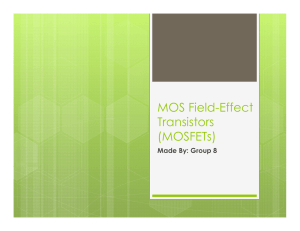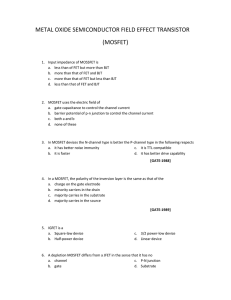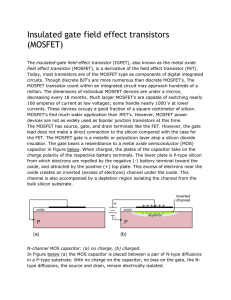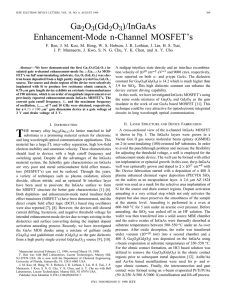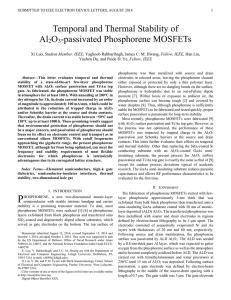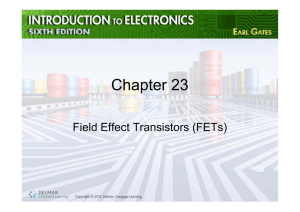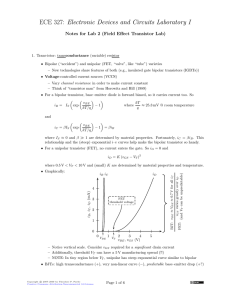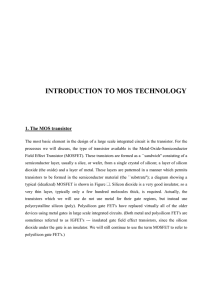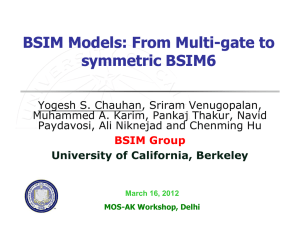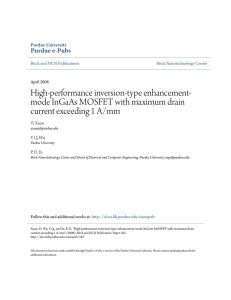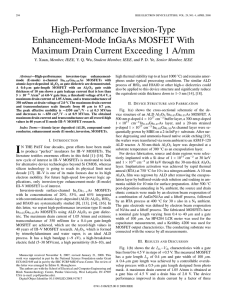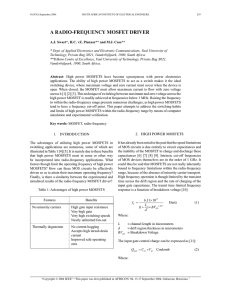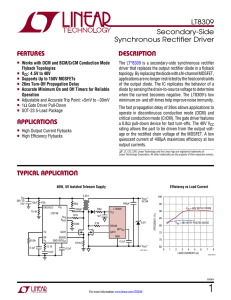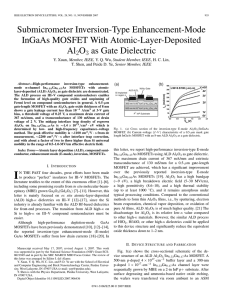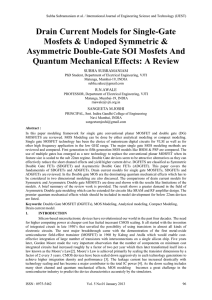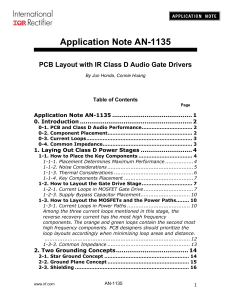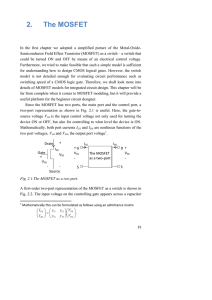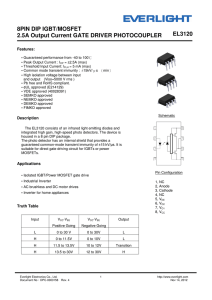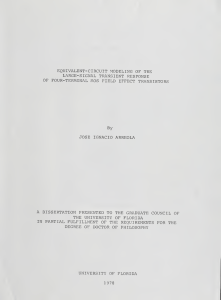MOSFET (MISFET, IGFET)
advertisement
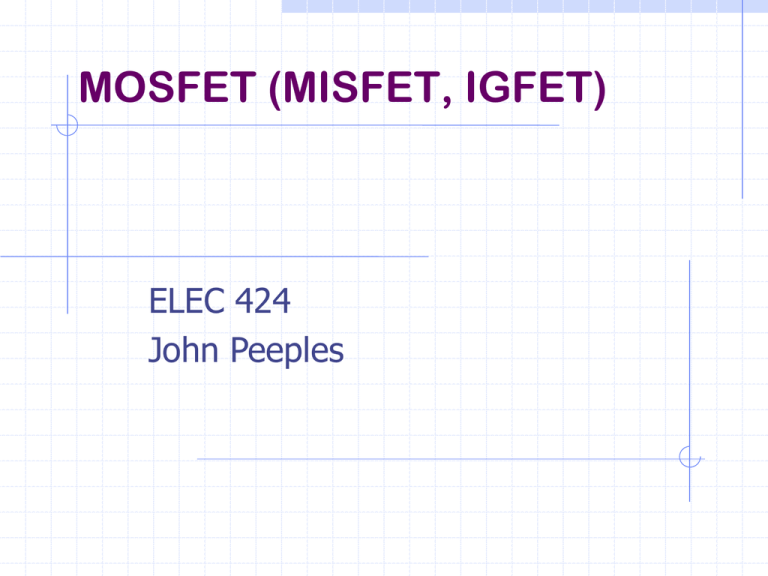
MOSFET (MISFET, IGFET) ELEC 424 John Peeples Field Effect Transistors Proposed in the 1930’s by Lilienfeld Not practical because of role of surface defects/states Bardeen and Brattain were trying to demonstrate an FET when they serendipitously invented the point contact bipolar transistor. Schockley extended the FET concept to the BJT First MOSFET finally happened in 1960 Bipolar vs Unipolar P-N Junction Dominate Features Minority carrier injection at forward bias Depletion width modulation at reverse bias Bipolar devices rely primarily on minority carrier injection across the narrow base region. Both hole and electron current matter, so they are called BIPOLAR devices. Junction FETs rely primarily on reverse bias to control channel width, and subsequently majority carrier current. FETs are sometimes called UNIPOLAR devices. Similar but Different BJTs and FETs Both three terminal devices Current through two terminals is regulated by the third BUT Base current controls emitter/collector current in BJTs Gate voltage controls source/drain current in FETs What Transistors Do Amplify The electrical character of the source/drain or emitter/collector is a reflection of the character of the gate or base, but increased or decreased by a gain factor. Switch Source/drain or emitter/collector current can be turned on or off by applying the proper signal to the gate or base. Amplification If VG is increased or decreased by 0.25 V, VD will increase or decrease by ~2 volts. Gain = Vout/Vin = 8. JFET Operating Regions Linear region Approaching Pinchoff Beyond Pinchoff Source is the region from which the majority carriers flow. They flow to the Drain. Family of Curves VG determines the operating curve VD determines the region (linear, approaching saturation, pinch-off) of operation. MOSFET Band Diagram Equilibrium Invariant Fermi level bends the p-type valence band up, creating an energy barrier to electron/hole flow. Positive Gate Voltage flattens the barrier At VT (threshold voltage) Allows current to flow with proper source to drain bias N-Channel MOSFET Operating Regions Linear Region VG > VT and VD < (VG - VT) Saturation onset VG > VT and VD = (VG - VT) Strong Saturation VG > VT and VD > (VG - VT ) How to Build a MOSFET http://microscopy.fsu.edu/electromag/java/transistor/index.html N-Channel Formation in P type Material Equilibrium (M)etal = gate (O)xide = gate oxide (S)emiconductor = p-type VG=0 Depletion VG>0, repels holes from surface region Accumulation VG<0, attracts holes to surface region Inversion VG>>0, attracts electrons to surface region, making it “N type” MOSFET Equivalent Circuit MOSFET Short-Channel Effects Shorter channels incur higher electric fields and current densities. • Charge accumulates within the gate oxide due to hot carrier generation • Unwanted (leakage) current flows due to punchtrough from the source to the drain • Devices fail catastophically due to thin gate oxide breakdown (rupture) Threshold Shift due to Hot Carriers “Hot” electrons are “trapped” in the gate dielectric, imparting a permanent charge and subsequent threshold shift, as shown in these before and after I-V curves.
